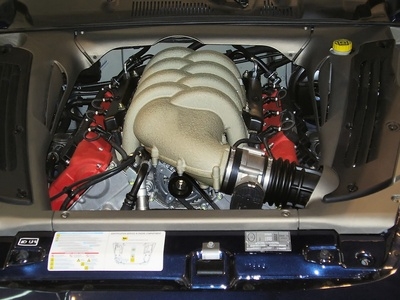
There's nothing particularly new about electric superchargers; the technology behind them has been around longer than the internal combustion engine itself, but until fairly recently they weren't small or light enough to work in an automobile. Electric superchargers may once have been relegated to the realm of quack hot-rodding, but high-end components and a proper set-up can make the car using one a real force to be reckoned with.
An electric supercharger is just like the air compressor in your shop, which uses electric current to spin an electric motor, which in turn drives a compressor. In automotive applications, this compressor shoves air into the engine, where it combines with fuel to make more power. In theory, an electric supercharger can almost instantly add hundreds of horsepower to your engine at the push of a button. Granted, nitrous oxide can do the same thing, but nitrous tank refills aren't cheap.
Electric superchargers have traditionally had three major problems. The first and most basic is that the supercharger itself requires power to turn. This is part of the reason that turbos (which draw their power from expanding exhaust gases) produce more power than an identically sized supercharger. Secondly, electricity isn't free. A supercharger that requires 50 horsepower to compress a given volume of air will require 50 horsepower no whether it draws that power from the crankshaft or the alternator. Thirdly, a standard car alternator capable of producing 50 horsepower (about 37.3 kilowatts) might weigh over 100 pounds. Worse yet, the electric motor that drove the supercharger would weigh about the same.
Two major advancements have begun to make electric superchargers a truly viable technology. Firstly, most electric superchargers use an advanced turbo-type centrifugal compressor, which offers less resistance and more airflow/boost output per unit of power consumed than old-school Roots-type superchargers. Magnet technology helps to address the mass issue; modern electric motors/generators use extremely powerful neodymium/beryllium magnets that allow them to produce the same power as much heavier motors/generators using weak iron-based magnets. The battery and motor technology has come far enough at this point that a high-end supercharger/battery setup can actually weigh and cost less than a comparable turbo kit.
Power generation remains a problem, but modern technology once again comes to the rescue in the form of powerful and lightweight lithium-ion battery packs. Lithium-ion battery packs capable of storing enough energy to run an electric supercharger are getting light enough, compact enough and cheap enough to make them a viable option to heavy, power-sapping alternators. The electric supercharger/battery combo works like a self-replenishing nitrous system; power remains available at the push of a button, but the car's alternator can recharge the battery pack between runs. However, the electric supercharger system still costs far more and is more difficult to tune than a comparable nitrous set-up, so these power-adders are really only cost-effective for pro racers who might otherwise burn through hundreds of dollars worth of nitrous in a weekend. Electric superchargers also seem like a perfect fit for hybrid vehicles, which already have powerful generators capable of quickly recharging their enormous battery packs.